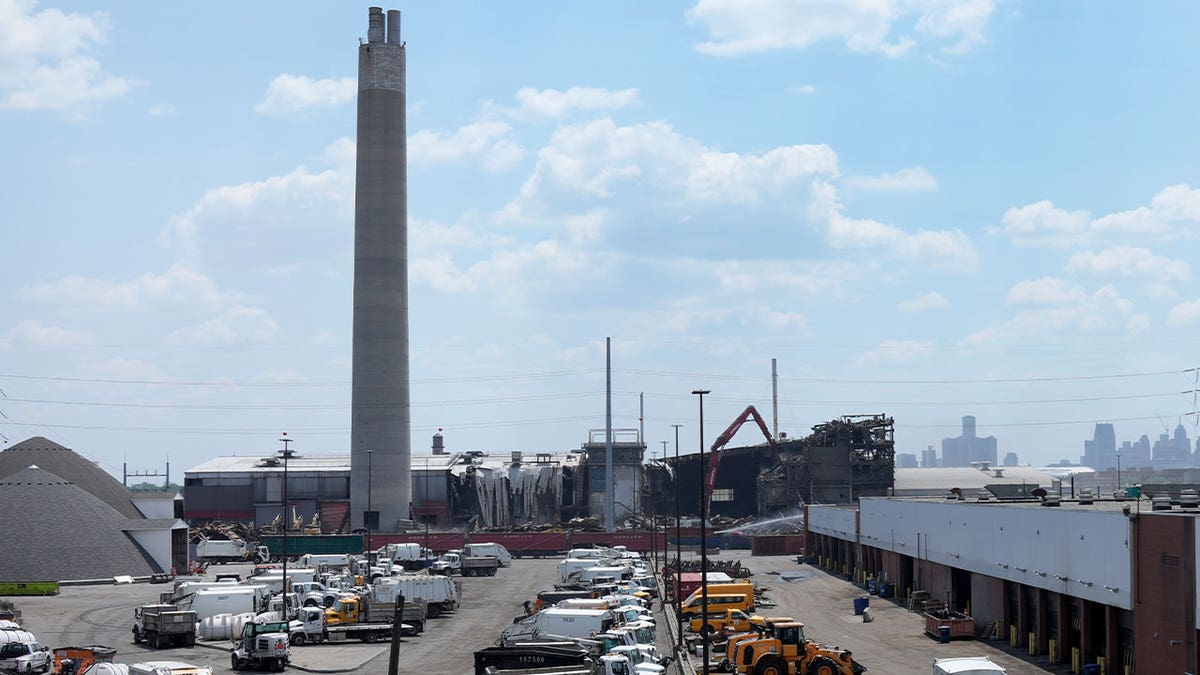The towering smokestack of Detroit's notorious trash incinerator, a source of foul odors and health concerns for decades, was demolished Sunday morning. The controlled implosion marked a significant step in the year-long demolition process, expected to conclude by July.
Located northeast of downtown, the incinerator, operational since 1989, burned up to 5,000 tons of trash daily. The resulting fumes and pervasive stench affected residents for miles, particularly those living nearby, raising significant concerns about pollution and its impact on public health.
Mayor Mike Duggan acknowledged the incinerator's negative impact on the community, highlighting it as a health hazard disproportionately affecting lower-income communities of color. The demolition represents a victory for residents who endured the facility's presence for years.

Image: The remains of the smokestack after the implosion. (AP Photo/Paul Sancya)
With the incinerator closed, Detroit now transports household waste to landfills outside city limits. Prior to the implosion, city officials took precautions, informing nearby residents and advising them to keep windows closed. The smokestack was strategically felled onto the incinerator property, away from residential areas. Dust clouds resulting from the impact were controlled using water mist and monitored for air quality and vibration levels.
The Detroit implosion follows other similar demolitions that have encountered challenges. Recent examples include an incident near Pittsburgh where the implosion of power plant smokestacks caused damage to nearby homes, and a 2020 demolition in Chicago that resulted in a massive dust cloud engulfing a neighborhood.








